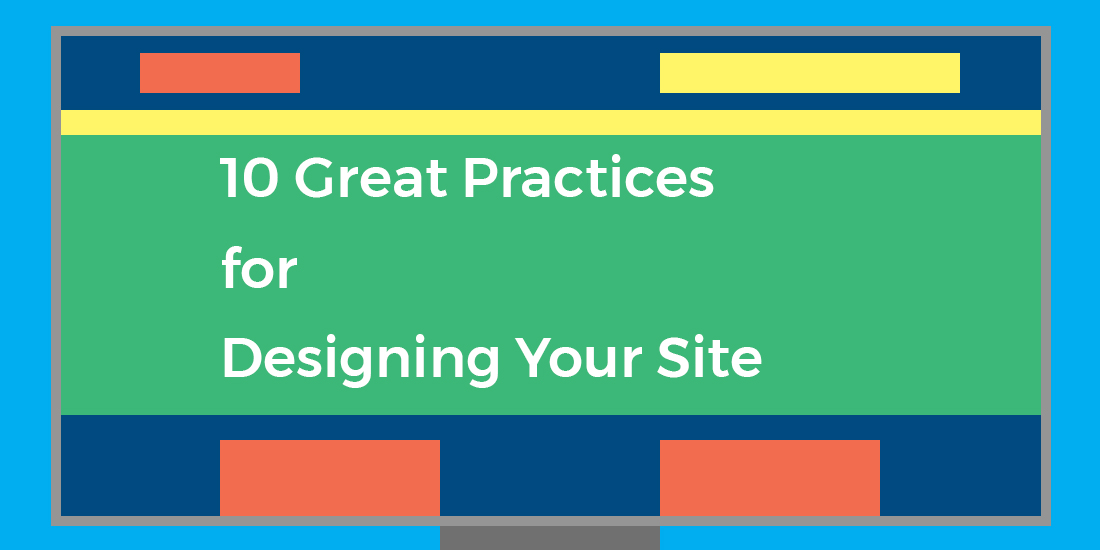Design your Website using 10 Greatest Practices
Design standards do not often pop into the mind of marketers. However, for web designers, they are necessary. “Standard web conventions” are the guidelines for clarity and usability web designers follow to implement designs that align with visitors’ expectations.
The standard
To better understand the standard, a checklist of 10 web design standards was created and compared to the top 50 marketing websites (found under the marketing and advertising category on Alexa). This comparison allows for proof that the standards are indeed standard.
Using the guidelines from a Nielsen Norman group article, the list used the following thresholds:
- Standard: 80% or higher use the equivalent design approach on their websites
- Convention: 50-79% use the equivalent design approach on their websites
- Confusion: 49% or fewer follow, not a single design approach is dominating on their websites
- Logo in the upper left corner
This is a standard since 100% of websites studied maintained a clickable logo in the top left corner of all pages on the websites.
- Main Navigation on the top
At the top of each page, almost 9 in 10 pages of these websites making the main navigation horizontal across the top a web design standard.
- Slideshow on Home Page
The carousel (homepage slideshow) contains an ever-changing group of images and messages and almost a third of the websites contain them. This does not make it a standard; however, it is an evolving idea. More and more sites have started favoring rotations of images over a static one. Basically, the idea is to select the option best for you and your organization.
- Contact information in upper right corner
Only 44% maintain a contact button or link in the upper right corner on every page of the website. Despite the placement being common and considered a great practice, it is not measured as a standard.
- Call to Action Placed Prominently on Top
Calls to action placed at the top in can’t-miss locations exist on 78% of the websites. While it falls below the threshold, it is undoubtedly a convention.
- Home Page contains value proposition high up
The specific value proposition is located high on the home page for 4 out of every 5 of the websites. Most of these websites show their value to the visitors in the top “half” of the main page; those that didn’t lack any clear value proposition. An issue that comes from this is that browsers do not come with standard “height” in pixels. Therefore, many designers create specific elements high on pages to appear more visible to most visitors without scrolling.
- Footer with Signup Box
Only 24% of the marketing websites include an option for visitors to sign up for email updates in their footers. That renders this a common, but not conventional practice. Mainly, footers contain information on privacy, copyright, legal, sitemap, and contact links.
- Footers with Social Media Icons
Icons in the social media websites are held in the footers of 72% of websites, making it almost a standard design element. 26% of these websites contained the icons in the header. These icons lead visitors away from your site to another site, hurting your business by pulling traffic away from your site. Consider including them in the footer to make them less visible.
- Header Contains Search Feature
A search feature exists in 54% of the marketing websites. Roughly half of the sites have no search feature on every page in any way. A search tool can be unnecessary unless a website includes lots of content. In general, only when a website is not organized well does it need the search tool.
- Responsive Design
Of the websites, 68% remain mobile-friendly with responsive web design. With this feature, users’ experience is consistent across devices. However, it is a convention, not a standard. It becomes more complicated to add this feature in after a website is built since its part of its programming. This type of design has remained great practice for some time. It’s common and could soon become a standard.
Dominance of Custom Designs
This list discusses only ten design standards, and as it is evident, they are not very standard. Other than three from this list, no standards exist for web design. Some conventions exist such as a prominent call-to-action, social media icons in the footer, responsive web design, and search tool in the header. While some of these features may be considered best practices, they are not common on many websites. Custom web design remains the default.
Practical Advice for Any Designers
Having standards makes it easy to match the expectations of your audience. Visitors bring ideas about what they’ll find and where. The website remains a critical part of your marketing base.
Why make your site different?
Any design element anticipated in specific place should be placed there.
Beyond design elements, other standards exist that any decent designers recognize: Brand Standards, Coding Standards, and Accessibility Standards. Brand standards consist of colors, types, and tone and remain precise to each business. Create a style guide and keep it consistent. Coding standards use common programming to assure your website maintains display ability and behaves properly in any browser. Accessibility standards mean you need to follow the standards from the UN Convention on the Rights of Persons with Disabilities. Having access to information remains a basic human right.
By maintaining standard web conventions, you assure good design. Any breakaways from these norms should be done deliberately and with purpose. Make sure you plan on understanding the effect of being unexpected.


